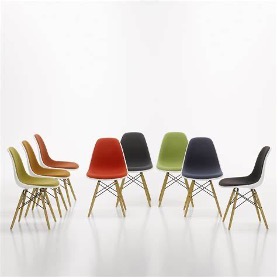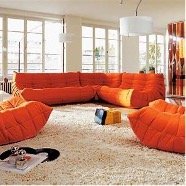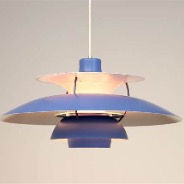The dupe dilemma in the home & design industry
- elelloum
- Apr 25
- 4 min read
Updated: Jul 31
In the designer furniture world, a surprising contradiction is taking shape. Everyone agrees that counterfeiting is “not okay,” yet at the same time, “dupes” — deliberate imitations of branded designs, minus the fake logos — are being praised as an irresistible new trend.
How can something condemned on one side be celebrated on the other?And more importantly, what’s at stake for furniture brands facing these so-called “inspired” copies?

THE DUPE PHENOMENON : IMITATING WITHOUT (APPARENTLY) CHEATING
The hashtag #dupe has racked up billions of views on TikTok, fueled by influencers hunting down budget versions of high-end pieces. The term dupe (short for “duplicate”) refers to a lookalike of a branded product — one that mimics its appearance without copying the name or logo. In the world of high-end furniture, dupes replicate the iconic lines and aesthetic codes of historic design brands, all while skirting intellectual property laws. They now span every product category: seating, lighting, storage, and more. In short, it’s a “fake that doesn’t call itself fake.” These look-alike copies let the general public access stylish design at a lower cost, without crossing into the clear illegality of counterfeiting.The second major difference from counterfeits? Counterfeits have always carried a negative connotation — a term that suggests low-quality knockoffs and leaves the buyer feeling guilty.
"Counterfeiting is bad, but dupes are trendy".
From iconic sofas to award-winning chairs, no design is safe. One recent example: a buzzworthy new search engine called Dupe made headlines for finding a $2,000 Herman Miller chair dupe… for just $15 on a shady import website (source: ladn.eu).
Iconic Examples:
Eames DSW Chair – Vitra: Sold for €500 in its authentic version, but available for under €100 on marketplaces like Amazon.
Togo Sofa – Ligne Roset: A cult 1970s design, priced around €3,000, but widely copied starting at €500 on Asian e-commerce sites.
PH5 Lamp – Louis Poulsen: This iconic pendant lamp sells for over €800, while unofficial “inspired” versions go for as little as €150.
Eames DSW Chair – Vitra Togo Sofa – Ligne Roset PH5 Lamp – Louis Poulsen
DUPE VS. AUTHENTICITY : A REAL IMPACT ON BRANDS
If consumers often excuse themselves (“It’s not a fake, just a dupe”), brands see things very differently. Every dupe circulating on the market chips away at a brand’s identity and design legacy.
The issue goes far beyond simple commercial nuisance:
Erosion of perceived value and creative legitimacy: when an icon becomes a mass-market item, its symbolic power fades.
Lost revenue and customer diversion: every dupe sold is a missed opportunity for the original brand.
Unfair competition in the second-hand market: without proof of authenticity, originals are harder to distinguish and value.
Weakened distribution channels: resellers and partners struggle with growing consumer distrust.
In short, whether it's a dupe or a counterfeit, the core issue remains the same: it’s the unfair appropriation of a brand’s creative work.

PROTECTING AUTHENTICITY AND ENHANCING EXPERIENCE
In the face of the dupe explosion, how can brands and designers respond and reclaim the upper hand?
TAMPER-PROOF DIGITAL AUTHENTICATION
In practical terms, this means equipping each piece of furniture with a tamper-proof digital certificate that confirms both its authenticity and rightful ownership.This instant proof of origin builds customer trust—especially in the second-hand market, where buyers want certainty about what they're purchasing. And since a dupe can't obtain such a “passport,” the difference between an original and a copy becomes crystal clear.
The benefits are multiple: Customers can verify at any time that they own a genuine piece, enhancing the perceived value of their purchase and encouraging brand loyalty.When reselling, the certificate simplifies the transaction and helps preserve the item's market value. For the brand, it’s an effective way to actively fight counterfeiting and copycat models while also nurturing a lasting relationship with its clientele.
Example:Ligne Roset has equipped its iconic Togo sofas with a Trust-Place digital passport, allowing each piece to be authenticated and helping to fight counterfeits at the source.
ELEVATING THE CUSTOMER
In the face of rising dupe culture, simply selling a product is no longer enough the entire act of buying must be redefined.
With Trust-Place:
Every purchase becomes a gateway to exclusivity: registered warranty, exclusive content, private events, and personalized services — a brand experience that goes far beyond the product itself.
The digital passport becomes a lasting connection: it allows the brand to stay in touch with the customer, even years later or during resale.
The product enters a trusted ecosystem: authenticity, traceability, and brand loyalty things no imitation can replicate.
Transform your products into lasting, differentiating touchpoints.
With Trust-Place, your creations don’t end with their first life:
They build trust at the moment of purchase, with transparent traceability that inspires confidence,
They retain their value over time, even when passed from one owner to another,
They keep the connection alive, through buy-back or trade-in services directly managed by your brand.
Each piece becomes more than just furniture: It’s a marker, a memory, and a lasting bond between you and your customer.

Protect Your Creativity — Get in Touch With Us
Dupes may be trending, but authenticity and trust are the true foundations of a strong, lasting brand in the furniture industry. Don’t let cheap imitations erode your image or your capacity to innovate. There are real solutions to protect your designs and build loyalty around what makes your brand unique.
Curious to learn more about Trust-Place and its certification platform?Reach out to our team today and discover how to highlight the authenticity of your products and shield your customers from dupes.
Together, let’s make trending rhyme with trustworthy again.









